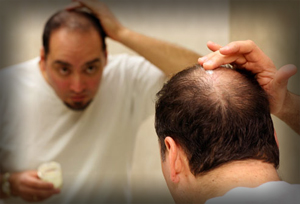Alopecia, the hair loss condition, has three main types. Alopecia Areata; this is characterized by small patches of hair loss, normally round and on the scalp. Alopecia Totalis is losing all the hair on the scalp. Finally, Alopecia Universalis, this is losing the hair on the entire body. With Alopecia Areate, there is hope for hair regrowth, which is less likely in the other two types of the condition.
It is not possible to tell when an outbreak is likely to occur, how bad the effects will be or the length of time before hair regrowth is possible. This is because the reason behind Alopecia is an inflammation that causes the body to attack the hair follicles and the result is the hair falling out. What needs further investigation is why these attacks happen or what the reason is behind the recovery and the repeated attacks.
It is possible that there are links in the genetics of a person, if a family member has Alopecia then the risks of developing the condition increases. There are also some connections between the condition and the possibility of developing an autoimmune disease like Lupus, Vitiligo and a thyroid condition, this can be either underactive which means the body doesn’t produce enough thyroxin or an overactive thyroid, where the body produces too much thyroxin.
The symptoms of the condition are relatively simple, hair loss. While there is no current cure for the condition there have been some great advances with the Alopecia Areata; there have been trials of medication that have looked at this variant of the condition and there are some hopeful signs that in a few years there is the possibility that a cure for the condition will be found.
There are some treatment options available, while, it is possible for scientists to understand the cause of the condition there are no explanations as to why the body starts attacking the hair follicle.
Some treatments for alopecia are basic steroids; this can be in injection form, tablets taken orally or cream applied directly to the scalp. This type of treatment can work, but isn’t always successful. While those who suffer with Alopecia Areata have the best chances of success, if a large patch forms immediately, the likelihood of hair regrowth is limited.
There are even some types of ultraviolet lights used for some treatment options, stimulating the scalp into regeneration of the hair follicle into regrowth.
One option that you might not have considered is a wig to hide the hair loss. Wig making has improved and they are looking more realistic, but it is important to discuss all the options open to you with your specialist who is treating your Alopecia and a hair specialist who will be able to go through the options that are going to help the hair regrowth.
Therefore, talking to a specialist like Dr Katona will give you the information as to the options open to you and your current condition.

